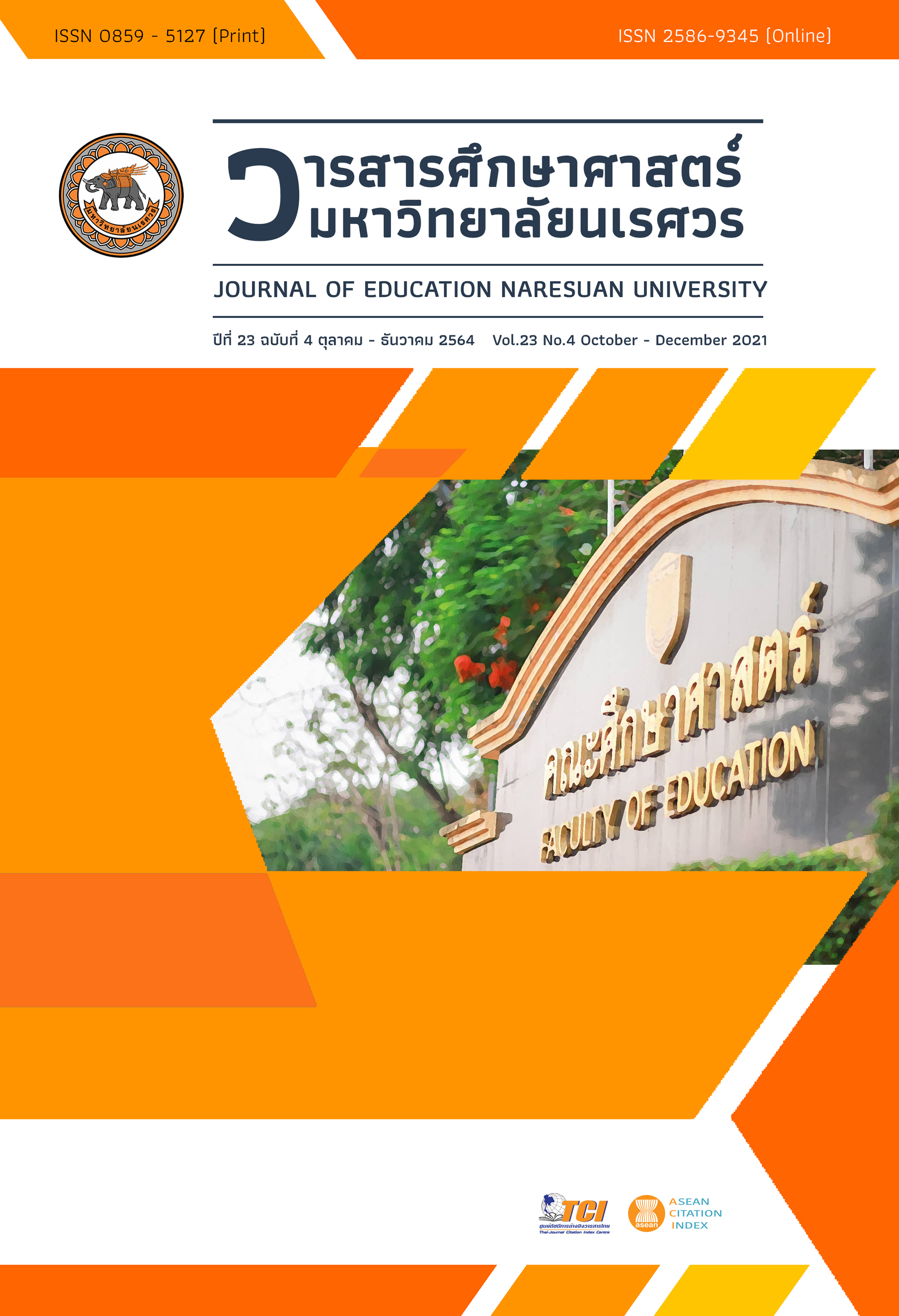MODEL-BASED LEARNING APPROACH INTEGRATED WITH AUGMENTED REALITY FOR ENHANCING GRADE 10 STUDENTS’ MODEL-BUILDING SKILLS AND SCIENTIFIC CONCEPTIONS IN SOLUTION TOPIC การจัดการเรียนรู้โดยใช้แบบจำลองเป็นฐานร่วมกับเทคโนโลยีเสมือนจริงที่ส่งเสริมทักษะการสร้างแบบจำลองและมโนทัศน์ เรื่อง สารละลาย ของนักเรียนชั้นมัธยมศึกษาปีที่ 4
Main Article Content
Abstract
This research aims to develop a way to implement the model-based learning approach integrated with Augmented Reality technology to enhance students’ model-building skills and scientific conceptions in the solution topic. Research design was the action research consisting of Plan, Action, Observe and Reflect, which had been continued in 3 cycles. The participants were 45 Grade 10 students. Research instruments included lesson plans, reflective journals, semi-structured observations, 3D model evaluation protocol, semi-structured interviews and scientific conception test. Data were analyzed by content analysis and critiqued data creditability with resource and method triangulations. Research results revealed that Model-based learning approach consist of 4 steps included 1) creation of the model, 2) expression of the model, 3) test of the model, and 4) evaluation of the model. Also, the Augmented Reality technology was proceeded in step 3 to support the students’ more concrete model-building skill. Furthermore, the students appeared to have development of model-building skills in high level, especially improving their model. Also the skills helped almost 80 percent of them to have scientific conceptions in the solution topic, especially the colligative properties of solution.
Article Details
The owner of the article does not copy or violate any of its copyright. If any copyright infringement occurs or prosecution, in any case, the Editorial Board is not involved in all the rights to the owner of the article to be performed.
References
Barak, M., & Hussein-Farraj, R. (2013). Integrating model-based learning and animation for enhancing students’ understanding of proteins’ structure and function. Research in Science Education, 43(2), 619-636.
Ditcharoen, N., Polyiam, K., Vangkahad, P., & Jarujamrus, P. (2014). Development of learning media in topics of atomic structure and chemical bond with augmented reality technology. Journal of Research Unit on Science, Technology and Environment for Learning, 5(1), 21-27. [in Thai]
Gilbert, J. K. (2004). Models and modelling: Routes to more authentic science education. International Journal of Science and Mathematics Education, 2(2), 115-130.
Glynn, S. M., & Duit, R. (1995). Learning science in the schools: Research reforming practice. New Jersey: Lawrence Erlbaum Associates.
Greenbowe, T. (2003). Chemical education research group simulation. Retrieved from http://group.chem.iastate.edu/Greenbowe/sections/projectfolder/simDownload/index4.html
Halloun, J. A., & Hestense, D. (1998). The initial knowledge state of college physics students. American Journal of Physics, 53(11), 240-242.
Johnstone A. H. (1993). Introduction. In Wood C. and Sleet R. (Eds.), Creative problem solving. London: Royal Society of Chemistry.
Kemmis, S., & McTaggart, R. (1988). The action research planner (3rd ed.). Geelong, Australia: Deakin University Press.
Schwarz, C. V., Reiser, B. J., Davis, E. A., Kenyon, L., Achér, A., Fortus, D., Shwartz, Y., Hug, B., & Krajcik, J. (2009). Developing a learning progression for scientific modeling: making scientific modeling accessible and meaningful for learners. Journal of Research in Science Teaching, 46, 632–654.
Srifa, P. (2013). Augmented Reality. Bangkok: Kasetsart University. [in Thai]
Wongwanich, S. (2014). Classroom action research (17th ed.). Bangkok: Chulalongkorn University Press. [in Thai]


